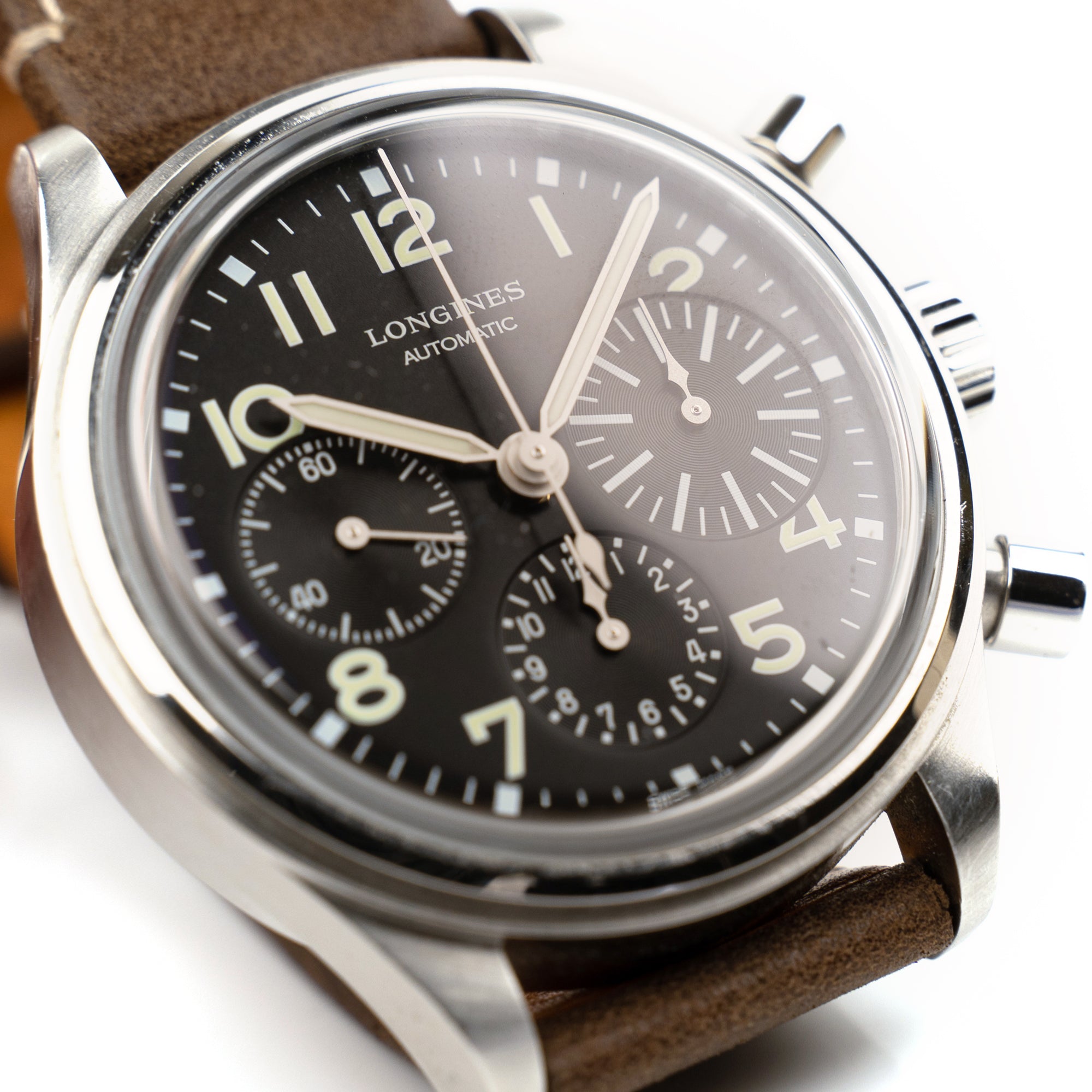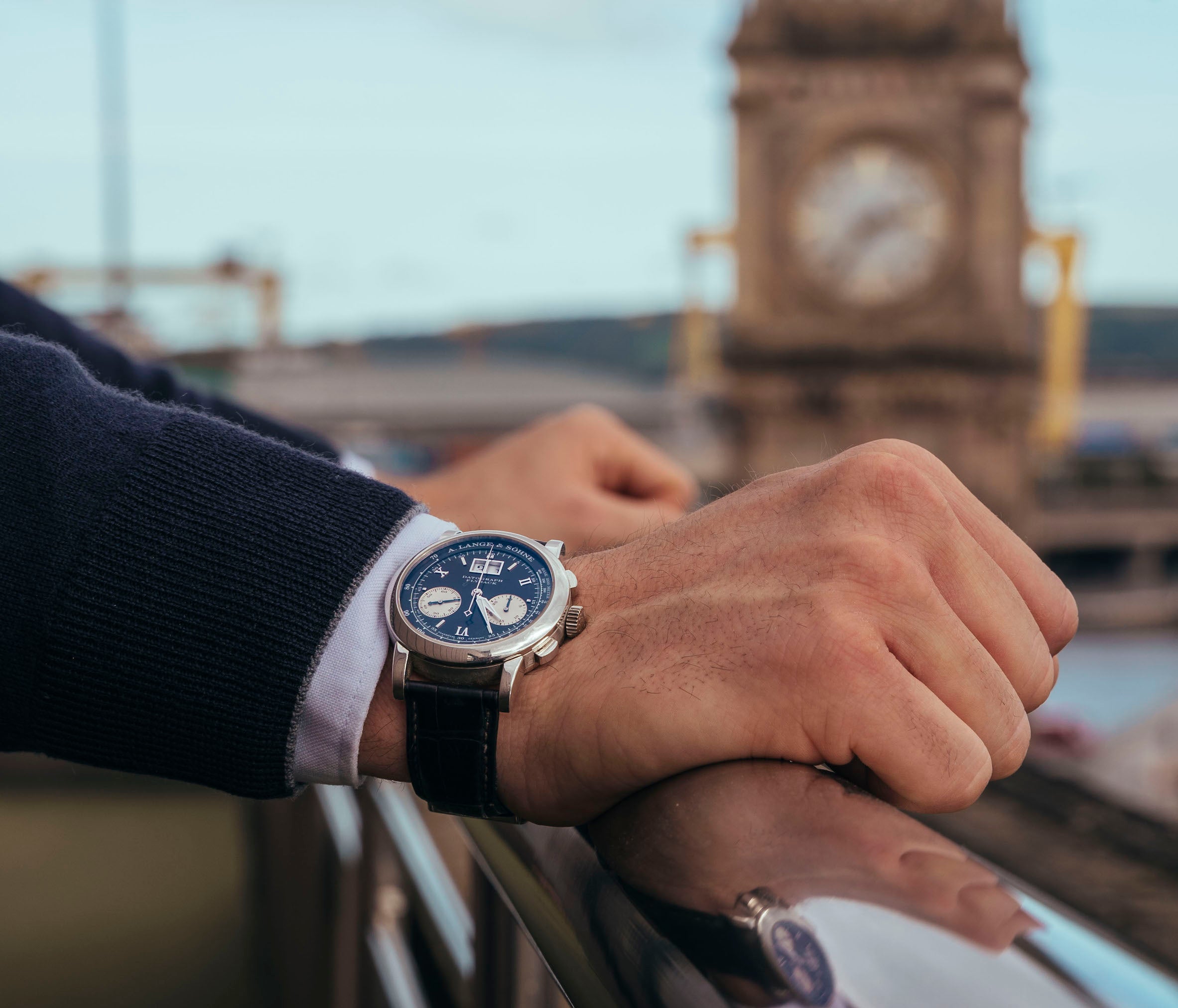
Longines: ‘The World's Most Honoured Watch'
Decades before Omega & Rolex existed, Longines were award-winning innovators, transformers of the Swiss watch industry, and worn by Einstein, Aviation heroes & Hollywood Royalty
by Alan Boal
The World’s Oldest Brand and the Pursuit of Excellence
A fun fact about Longines, and evidence of their long watchmaking heritage, is that their famous winged hourglass logo is the world’s oldest trademark – of any sort, not just in watchmaking – still remaining in continuous, unchanged use today, having first been internationally registered in 1889.
As early as 1867, Longines were winning awards at the Universal Exhibition in Paris. Indeed, such was their success as winner of 10 ‘Gran Prix’ at World’s Fairs (more than anyone else) and multiple Observatory Chronometer accuracy competitions, Longines’ print advertising and watch boxes bore the legend ‘The World's Most Honored Watch’ for much of the 20th Century.
Founded in 1832 by Auguste Agassiz in Saint-Imier, Switzerland, as ‘Raiguel Jeune & Cie’, it wasn’t until 1867 that the Company came to be known as Longines, taken from the local area (‘Les Longines’, or ‘long meadows’) in which Agassiz’s nephew, Ernest Francillon, centralised all watchmaking enterprises under one roof.
In the late 19th & early 20th Centuries, Longines were leaders in watchmaking - by way of comparison, the Omega & Rolex names didn’t come into existence until 1903 & 1915 respectively (although both traded under different titles before then).
Recognising the new factory-driven competition from America, and evolving where British watchmaking failed to, Longines were important influencers in modernising the Swiss watch industry, encouraging the move away from the ‘etablissage’ home-based cottage industry to machine-assisted, mass parts production whilst still retaining their renowned Swiss quality.
Vintage Longines watches from the 1950s & 60s offer high quality and tremendous value, available for much less today than their Rolex & Omega counterparts of that era - compare movements, and the completely ‘in-house’ Longines stand apart, elevated by fine execution, lack of wire springs, and nicely-bevelled plates.
The most visual differentiator is Longines’ use of round, brass ‘chatons’ to house the ruby-red jewels within which the pivots of the movement wheels turn. Chatons used to be required in the early days when mass jewel production was less advanced, allowing the non-uniform jewels to be easier inset into movement plates. Though no-longer necessary, Longines continued the expensive, fiddly settings because of their beauty, standing-out shiny & golden against the nickel-plated movement. It’s interesting that many very high-end watchmakers still adhere to this old-fashioned practice today, such as A Lange & Sohne.
Chronographs and the Race for Space
Anyone with even a passing interest in watches will be aware of Omega’s Speedmaster Moonwatch for its decades’ long association with the NASA Space Programme and use during the 1969 Moon landings.
What might be less well known is that Omega beat out competition during the tough NASA testing from Rolex and Longines. The crystal of the Longines warped & detached during the high temperature & decompression tests, whereas the Omega waivered in timing but remained intact.
It’s ironic that Longines, a brand with long & illustrious expertise in Chronograph development, who debuted their first ‘20H’ pocket watch Chronograph as early as 1868, should have lost out in the lucrative race for the Space Chronograph.
In 1913 Longines’ created their most significant Chronograph, the ‘13.33Z’. The very first Chronograph movement designed for a wristwatch, it was a ‘mono pusher’, that is, unlike most modern Chronographs today which feature two separate start/stop & reset buttons, it had just a single button to operate the timer. Later, in 1936, the beautiful ‘13ZN’ introduced another world's first - a ‘flyback’ Chronograph which allowed the timer to be reset & immediately restarted, without stopping first.
It’s hard to overstate how innovative those were – indeed, even today monopusher & flyback chronographs are technical feats beyond the capabilities of most brands. At a time when watches were still indispensable working tools, and not jewellery, the progression from prior pocket watch timers was revolutionary, allowing much easier ‘hands free’ operation, which became vital in early aviation & military pursuits.
Who knows how watch history might have changed had Longines been selected by NASA instead of Omega, and reaped the fabulous benefits of association with the Space Programme? Would Longines instead have become the jewel in the Swatch crown, and perhaps even have been chosen for the cleverest marketing placement of them all - on the wrist of the ‘007’ super-spy himself, James Bond?
Albert Einstein, Aviation Pioneers, Racing Timekeepers & the World’s Thinnest Watch
Despite their failure to make it as official Astronaut gear, Longines has an enviable history.
There was no ‘official’ timekeeper appointed for the first modern Olympics in 1896, but it was Longines who supplied the watches and who competed with Omega (yep, them again) for bragging rights at future Games.
Longines were huge innovators in race timing, inventing the first finish-line ‘broken wire’ timing system in 1912 to stop the timer when the winner crossed, and also the ‘Photogines’ & ‘Contifort’ systems that recorded contestants’ time on film that could be developed immediately to deduce the winner.
Charles Lindbergh became a worldwide star in 1927 by succeeding in the first solo, non-stop transatlantic flight between New York & Paris, and it was Longines who timed the daring 33.5-hour feat that had killed several who tried before. Lindbergh then collaborated with Longines to create the ‘Lindbergh Hour-Angle’ in 1931, a tool watch which allowed aviators to calculate their position via celestial navigation.
In the 1942 film, ‘Casablanca’, screen legend Humphrey Bogart wore his personal Longines, and he later featured with another film icon, Audrey Hepburn, in a Longines advertising campaign, with the slogan ‘Elegance is an Attitude’.
Partnering with examples of performance and elegance, Longines have also kept time for Formula One racing in the 1980s, the Commonwealth Games, the French Open and Horse Racing events such as Royal Ascot & the Melbourne Cup.
When the 1970’s Quartz ‘Crisis’ hit, even mighty Rolex produced their own Quartz watch, so fearful were the Swiss of being left behind by the Japanese. Once again Longines took a leading role, announcing their 1969 ‘Ultra-Quartz’ as the world’s first serial production Quartz. In 1979 their ‘Feuille d'Or’ (Gold Leaf) was the world's thinnest ever watch, at only 1.98mm thick, in 1984 brought their VHP (‘Very High Precision’) Thermo-Compensated Quartz, accurate to an astounding 10 seconds per year.
In 2008, a gold Longines once owned by the physics genius Albert Einstein was auctioned for USD $596,000.
Swallowed by Swatch
Purchased in 1971 by ‘Ebauches SA’, Longines slowly surrendered Research & Production capabilities of their own when they merged in 1983 into the watchmaking colossus that would later become known as the ‘Swatch Group’.
Today, the Swatch Group would love to sell you a Longines.
But the problem is, as the world’s largest watchmaking group, they’d also like to sell you a watch from the 17 other brands they own, including Omega, Blancpain, Breguet, Tissot, Hamilton, Mido, Rado & Harry Winston.
It’s hard enough fighting-off Rolex, TAG Heuer, Cartier etc. without competing against yourself too.
So, what to do? To avoid the various sibling brands within the Group cannibalising sales from one another, Swatch artificially structured their ‘family’, so that each instead competes for its own niche.
Fun & funky Swatches sell for under £150; Omega have the £3,000 - £7,000 middle-market sewn-up, leaning on their heavily-advertised NASA & James Bond associations; and Blancpain & Breguet take care of discerning buyers desiring high-end, hand-finished, horological haute couture for over £10,000.
Where does that leave Longines and the like? Filling in the gaps, at a price point somewhere below the favourite son, Omega.
It’s an artificial, mid-level placement, somewhat beneath a proud brand that once occupied the pinnacle of watch-making.
More ‘Bang for your Buck’, or perhaps more aptly, ‘Fun for your (Swiss) Franc’
But, in a way, could this treatment by Swatch actually be a good thing for watch buyers?
Some luxury brands don’t offer anywhere near the value for money they really should, coasting on hype, with heavy advertising and all those expensive celebrity ambassadors driving inflated prices ultimately paid for by customers.
If you’re seeking a Swiss Made watch, from a famous old brand with tremendous heritage, producing models with elegance, good looks and innovation, then Longines’ suppressed positioning by Swatch actually represents a great opportunity to pick-up a quality piece (either vintage or modern) for a very reasonable price indeed.
Longines stopped making their own movements in the late 1980s, and though admittedly missing the truly ‘in-house’ movements of old, and lacking in high-end finishing, they do benefit from a supply of rock-solid and reliable movements from the likes of ‘ETA’ (also part of the Swatch Group).
Interestingly though, every Longines movement reference today starts with the letter ‘L’, to recognise that though starting life as generic movements from ETA, they are further tailored for use by Longines exclusively.
And they are keeping good company. ETA-derived movements are also used by the likes of IWC, Breitling, TAG Heuer, Panerai and many others - but they’ll charge you an awful lot more for the privilege.
Longines represents an excellent option as everyday wear, and it seems their customers agree, buying circa 1.5 million of their watches annually, making Longines one of watchmaking’s big beasts.
Heritage Revived
Arguably, Longines suffer through lack of a truly famous model to frame an advertising campaign around – something like what James Bond’s Submariner is to Rolex or Steve McQueen’s Monaco for TAG Heuer.
In recent years, Longines has made efforts to change that, by re-introducing some very fine watches that harken back to their brand heritage, such as:
- The 2007 launch of the Legend Diver meant Longines were amongst the first to ignite the now-ubiquitous craze for vintage-inspired design, and they did it very well. Reproducing the ‘super compressor’ case, inner rotating bezel and double crowns of their 1960’s model 7042, Longines made a handsome and highly distinctive dive watch capable of descending 300 metres.
- 2017’s Avigation BigEye Chronograph won that year’s ‘Best Revival’ prize at the ‘Grand Prix de l’Horlogerie de Genève’ awards. A modern version of a 1930’s Longines Pilot Chronograph, it sports a box-domed sapphire crystal & attractive asymmetric dial design. Powered by the Longines-exclusive L688.2 movement, it boasts 54 hours of power reserve, and a smoothly precise ‘column-wheel’ activation – something usually only found in higher-end Chronographs.
- Resurrection of their VHP 'Very High Precision' Quartz in 2017 placed Longines in elite watchmaking company, with a watch capable of supreme accuracy, guaranteed to gain or lose no more than 5 seconds over an entire year (by comparison, a bog-standard Quartz watch might lose or gain up to 30 seconds per month), plus a perpetual calendar that never needs reset, and a clever Gear Position Detection system to automatically reset the watch hands after a knock or strong magnetic exposure.
- In 2018, the Master Collection Annual Calendar brought a complex functionality that’s offered by very few brands, and usually at a much greater expense. It’s somewhat surprising that a mechanical Annual Calendar functionality – that is, a watch displaying both date & month, and which automatically accounts for months with 30 & 31 days, only needing manual re-setting once a year for February – was only developed as recently as 1996, and by Patek Philippe, no less. The exclusive 64-hour power reserve L897.2 movement inside is by miles the most affordable quality annual calendar around.
Though perhaps not quite what they once were in their shining heyday, a vintage or modern Longines still offers the chance to own a bit of classy watchmaking history, as they punch above their weight by adhering to their historic principles of innovation, quality and, above all, elegance.



